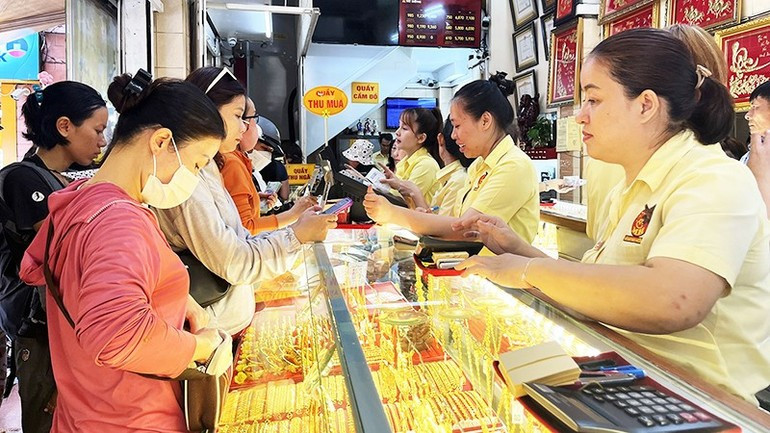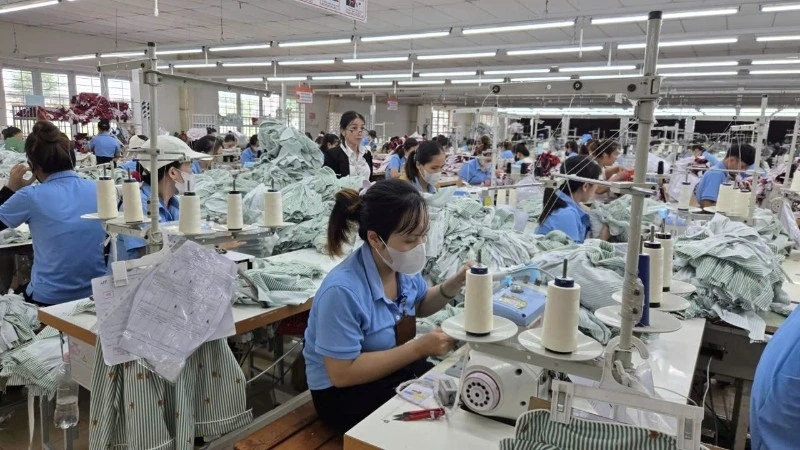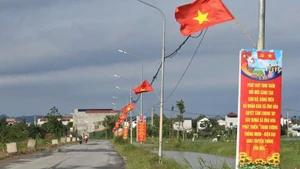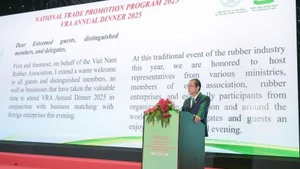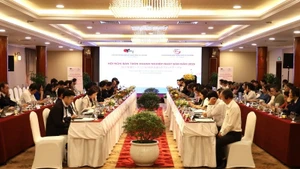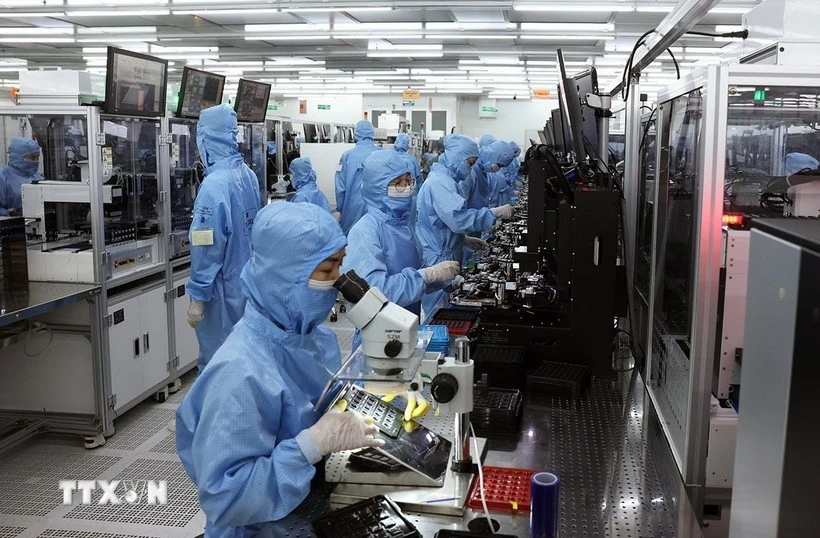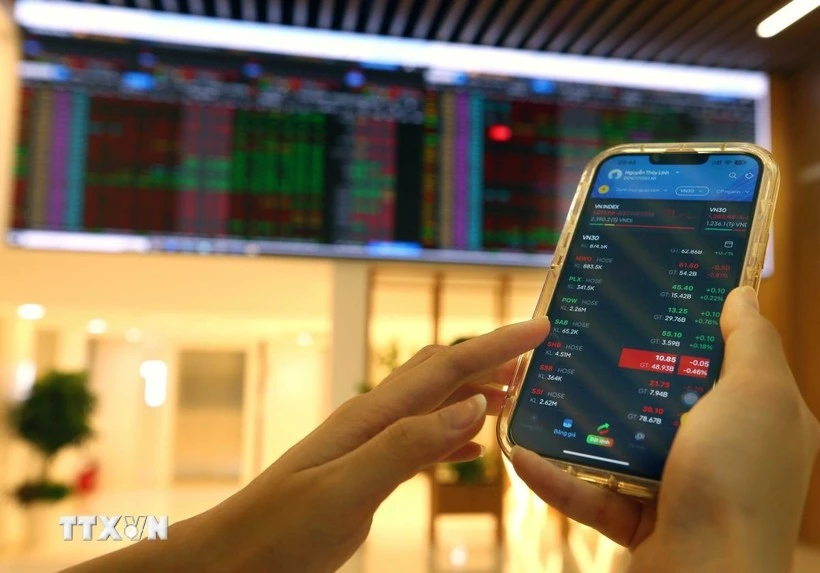However, experts have cautioned that any pilot implementation must be approached prudently. The State Bank of Viet Nam (SBV) has also acknowledged that establishing a gold exchange will pose considerable challenges.
At a recent seminar on the formation of a gold exchange, Dao Xuan Tuan, Director of the SBV’s Foreign Exchange Management Department, stated that the timing is ripe for such an initiative. During October, the SBV will submit a proposal to the Government on piloting a gold exchange. The establishment of a State-managed gold exchange is in line with current practices and directives. The goal is to mobilise idle gold from the public, reduce hoarding, and convert this resource into investment capital for production and business activities.
A favourable moment for establishing a gold exchange
According to Dao Xuan Tuan, the SBV believes that this is the right time to consider setting up a gold exchange, as several favourable conditions have converged. Notably, the State monopoly on gold bar production has officially been lifted. The creation of a gold exchange under a State-managed framework is consistent with current realities and Government orientations, ensuring transparency and market safety.
The SBV plans to implement the project in three pilot phases. In the initial phase, the focus will be on domestic physical gold trading without international market connections.
At this stage, the gold exchange will involve three main groups: service providers operating the exchange; payment banks (responsible for fund transfers, escrow account management, and reconciliation); and trading members, including banks and enterprises licensed to import gold.
In the second phase, the scope of trading will expand to include gold bar products. In the final phase, gold circulating in the domestic market, fund certificates, and derivative instruments will be brought into trading, gradually connecting to international markets and forming a modern, integrated, and fully functional gold exchange system.
Deputy Governor of the SBV Pham Tien Dung emphasised that establishing a gold exchange is not only aimed at effective market management but also at standardising all gold trading activities — from physical gold transactions to account-based and derivative trading. He said the exchange would serve as a key tool for the State to monitor, systematically collect market data, supporting monetary policy formulation and macroeconomic stability.
Many experts share the view that once operational, the gold exchange will help enhance market transparency, curb informal trading, and bring Viet Nam’s gold market into alignment with global practices.
Analysts believe that forming a gold exchange will help link domestic gold prices with global prices, narrowing the current gap of more than 10%. More importantly, the exchange is expected to “unlock” hundreds of tonnes of gold currently held by citizens, transforming this dormant asset into a valuable source of capital for economic development.
Over the past year, the financial market has experienced strong turbulence in gold prices. From the historical peak of 92 million VND per tael recorded in May 2024, domestic gold prices have surged to 153 million VND per tael as of October 16, 2025 — an increase of 1.6 times. This is considered one of the most dramatic movements in the past decade.
According to the Government, three main factors have widened the gold price gap. First, global gold prices have surged due to adverse impacts from global economic uncertainty, heightened geopolitical tensions, and the effects of US tariff policies. Second, market sentiment has strengthened expectations of continued gold price increases amid a weakening US dollar and the US Federal Reserve’s 0.25% interest rate cut at its September 2025 meeting.
This has driven domestic gold demand sharply higher while supply remains limited, resulting in a supply–demand imbalance. Authorities have also warned that some organisations and individuals may be exploiting market volatility for speculation and price manipulation, further increasing risks in the domestic gold market.
Developing a suitable roadmap
Regarding the exchange model, SBV Deputy Governor Pham Tien Dung stated that the SBV has not yet finalised whether there will be one or multiple exchanges. He explained that any organisation meeting requirements on technical infrastructure, governance capacity, financial strength, and qualified personnel may be licensed to operate a physical gold exchange.
“We do not lean toward a single exchange model but prefer controlled competition to ensure operational efficiency and market transparency,” Dung stressed.
Currently, three options are under consideration: establishing a national gold exchange managed and operated by the State; allowing gold to be traded on the Viet Nam Commodity Exchange; or setting up a gold exchange within the International Financial Centre, aligned with regional capital and commodity market operations.
Viet Nam is a country with a very high demand for gold, a commodity of great value that requires stringent systems for secure storage and account confidentiality. At present, the country lacks a centralised physical gold depository or a specialised gold testing centre — key infrastructural components for operating a transparent and efficient gold exchange.
Since October 10, banks and enterprises licensed to trade gold have been permitted to produce gold bars, with minimum capital requirements of 1 trillion VND for enterprises and 50 trillion VND for banks.
Earlier, during the “Following the Flow of Money” programme, Nguyen Minh Tuan, CEO of AFA Capital, observed that the question is no longer whether a gold exchange should be established, but rather how to design a model suitable for Viet Nam’s market conditions.
In fact, at the end of the 2000s, Viet Nam experienced a boom in gold trading exchanges, with thousands of trading accounts opened. However, by 2009, these exchanges were forced to close due to the absence of a clear legal framework. Their operations quickly revealed weaknesses, including speculation, price manipulation, and the diversion of capital away from productive business activities.
Analysing the reasons behind the collapse of those exchanges, Tuan pointed out that the core issue lay in the confusion among three concepts: physical gold, gold accounts, and contract-for-difference (CFD) trading. He explained that the problem arose when exchanges allowed gold account trading — essentially a financial derivative — while still permitting physical gold withdrawals, creating dangerous overlap and exposing both investors and the financial system to high risks.
Therefore, Tuan cautioned that if the model is revived without lessons learned from the past, it could easily repeat the same mistakes that destabilised the market over a decade ago. Experience from countries such as China, the UK, and India shows that physical gold exchange models can be highly effective when properly structured.
A common feature of successful models is that trading focuses exclusively on physical gold, avoids financial leverage, and operates under strict supervision from competent authorities. This discipline and transparency help ensure market stability, minimise speculative risks, and build investor confidence.
Drawing from this experience, Viet Nam should establish a physical gold exchange with a clear and transparent framework for management, trading, and custody. First, it is essential to separate State management functions from gold business and production activities.
Additionally, the mandatory use of e-invoices and software directly linked to cash registers at gold trading points must be enforced. This will enable regulators to monitor transactions in real time, enhance transparency, and build long-term confidence in Viet Nam’s gold market.
